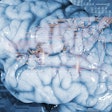Dear AuntMinnie Member,
Fresh off a strong performance at RSNA 2017, artificial intelligence (AI) continues to dominate the radiology headlines in the first few weeks of 2018.
For example, luminaries from Massachusetts General Hospital offer their thoughts on the potential of AI in a new article in the Journal of the American College of Radiology. A team that included Dr. James Thrall, Dr. James Brink, and Dr. Keith Dreyer, PhD, examined the potential value that AI will add to the interpretation of medical images, as well as the key challenges that need to be addressed before this potential can be fully realized. Learn more by clicking here.
We're also highlighting a recent market research report that tracks the adoption rate of AI among U.S. hospitals and imaging centers. Interestingly, the report shows that hospitals have been much more enthusiastic about AI than standalone facilities. Get the rest of the story by clicking here.
These stories and more news about radiology's hottest technologies are available in our Artificial Intelligence Community at ai.auntminnie.com.
Augmented reality start-up
Another hot topic in radiology has been the use of augmented reality to help radiologists perform their tasks. In Canada, a start-up called ProjectDR has been working on software that projects medical images onto patients' bodies -- even as they move.
The technology uses sensors that can track movement even on curved surfaces, according to the researchers behind the project. They believe ProjectDR could help physicians keep track of precise locations under the skin, which could be a boon during surgical procedures, for example.
Learn more about this fascinating project by clicking here, or visit our Advanced Visualization Community at av.auntminnie.com.
Flortaucipir-PET for Alzheimer's
In other news, researchers have tested a novel PET radiopharmaceutical for the detection of early-onset Alzheimer's disease. They found that it may perform better than MRI in detecting early signs of brain tissue degeneration.
Called F-18 flortaucipir, the radiotracer is designed to bind to the amyloid and tau-based neurofibrillary tangles that can influence the decline of Alzheimer's patients who have memory loss or physical deficiencies from the disease. Get more details by clicking here, or visit our Molecular Imaging Community at molecular.auntminnie.com.



















